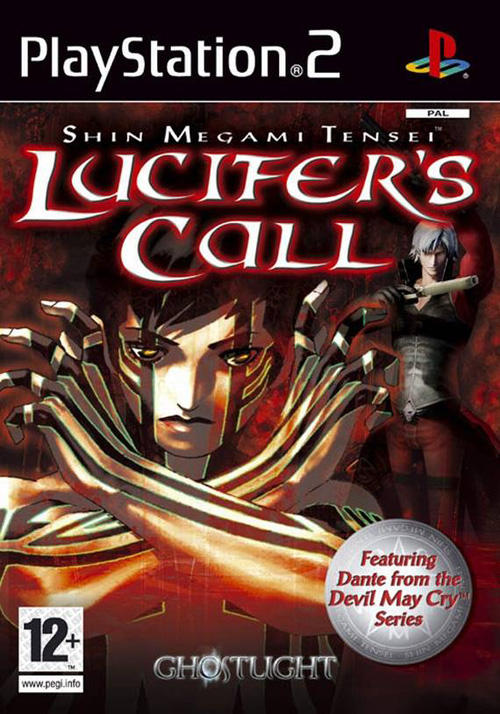About
Megami Tensei (Japanese: 女神転生?, “Rebirth of the Goddess”), commonly abbreviated as MegaTen (メガテン?), is a role-playing video game metaseries which was originally based on the novel series Digital Devil Story by Aya Nishitani (taking its name from the title of the first of those novels) and has gone to become one of the major franchises of the genre in its native country. The games are published by Atlus with the exception of the Famicom games, which were published by Namco.
Although most games in the series have independent stories, the Megami Tensei series has many common elements. Demons and mythology are prominent in each installment, usually giving players a chance to recruit demons into the battle party. Other common elements include certain game mechanics and plot themes. Most games in the series feature nonlinear gameplay offering freedom of choice between branching paths and multiple endings, a conversation system allowing players to engage enemies in conversation, the ability to use or capture monsters, and a moral alignment system.
Megami Tensei games have met commercial and critical success and the series is usually known as the third main RPG series in Japan, after Dragon Quest and Final Fantasy. Several games from the series have been released in the west and found praise from critics.
Spread
The first game, Digital Devil Story: Megami Tensei, was based on the novel of the same name by Aya Nishitani. It was released in Japan in 1987 for both the MSX and the Famicom. Alongside its sequel, Megami Tensei II, these are the only two games in the series to have only Megami Tensei in their name. Kyūyaku Megami Tensei (旧約・女神転生?), the title of the Super Famicom remake of the first two MegaTen games, translates to “Old Testament Reincarnation of the Goddess”. The flagship series then became the Shin Megami Tensei (真・女神転生?) series, which translates to “Reincarnation of the True Goddess”, the Shin in this case being a pun on the shin (新?) meaning “new”. As a spin-off of Megami Tensei, it eventually became the de facto subtitle of all non-Japanese Megami Tensei releases and Shin Megami Tensei: Strange Journey was the first game in the series to be developed with localization in mind
Spin-offs
the series has spin-offs were are localizated
Shin Megami Tensei: Devil Summoner
Devil Summoner is a spinoff of the Megami Tensei series of games and the first game in the Devil Summoner franchise. A sequel, titled Devil Summoner: Soul Hackers was released in 1997. A third game in the series (and a prequel), titled Devil Summoner: Raidou Kuzunoha vs. The Soulless Army was released in 2006. A fourth game in the series, and a sequel to the previous game, titled Devil Summoner 2: Raidou Kuzunoha vs. King Abaddon was released in 2008.

Shin Megami Tensei: Digital Devil Saga
Shin Megami Tensei: Digital Devil Saga, known in Japan as Digital Devil Saga: Avatar Tuner (Digital Devil Saga アバタール・チューナー Dejitaru Debiru Sāga Abatāru Chūnā?), is a duology of PlayStation 2 role-playing video games developed by Atlus. It is a spin-off of the Shin Megami Tensei series of video games; the story focuses on specific who become demons and have to consume their own to win a war and reach the “Nirvana”. The first game was released in Japan on July 15, 2004. The story to Digital Devil Saga is continued with its direct sequel Shin Megami Tensei: Digital Devil Saga 2, known in Japan as Digital Devil Saga: Avatar Tuner 2 (Digital Devil Saga アバタール・チューナー2 Dejitaru Debiru Sāga Abatāru Chūnā Tsū?) where the returning characters find themselves in a postapocalyptic world.

Shin Megami Tensei: Devil Survivor
Shin Megami Tensei: Devil Survivor, known in Japan as Megami Ibunroku Debiru Sabaibā (女神異聞録:デビルサバイバー?, lit. “Alternate Tales of the Goddess: Devil Survivor”), is a role-playing game in the Megami Tensei series developed by Atlus for the Nintendo DS. It was released in Japan on January 15, 2009, and in North America on June 23, 2009. An enhanced port for the Nintendo 3DS, Devil Survivor Overclocked (デビルサバイバー オーバークロック Debiru Sabaibā Obākurokku?), was also developed by Atlus in 2011 for Japan and North America while in 2013 for Europe.
Shin Megami Tensei: Persona
The first game for the Persona series was released in 1996 under the name Revelations: Persona. It wasn’t until the second game, Persona II: Innocent Sin for Playstation, that the series was recognized as its own franchise.
With the release of Persona 3 and Persona 4 for PS2, the series began to garner a lot of attention both in Japan as well as outside of Japan. Localized releases from Atlus USA drew the attention of Western audiences with the release of Persona 3 (2007) and Persona 3 FES (2008).

Related memes
Featuring Dante From The Devil May Cry Series
Featuring Dante From The Devil May Cry Series is a phrase taken from a seal placed on the cover of the European release of the video game Shin Megami Tensei: Lucifer’s Call to promote the addition of Dante, the main protagonist from the Devil May Cry series into the game. The addition of the seal on the European release, which wasn’t present on the releases of the game elsewhere, became a target of mock by the gaming community due to Dante’s rather trivial part in the game’s plot.
